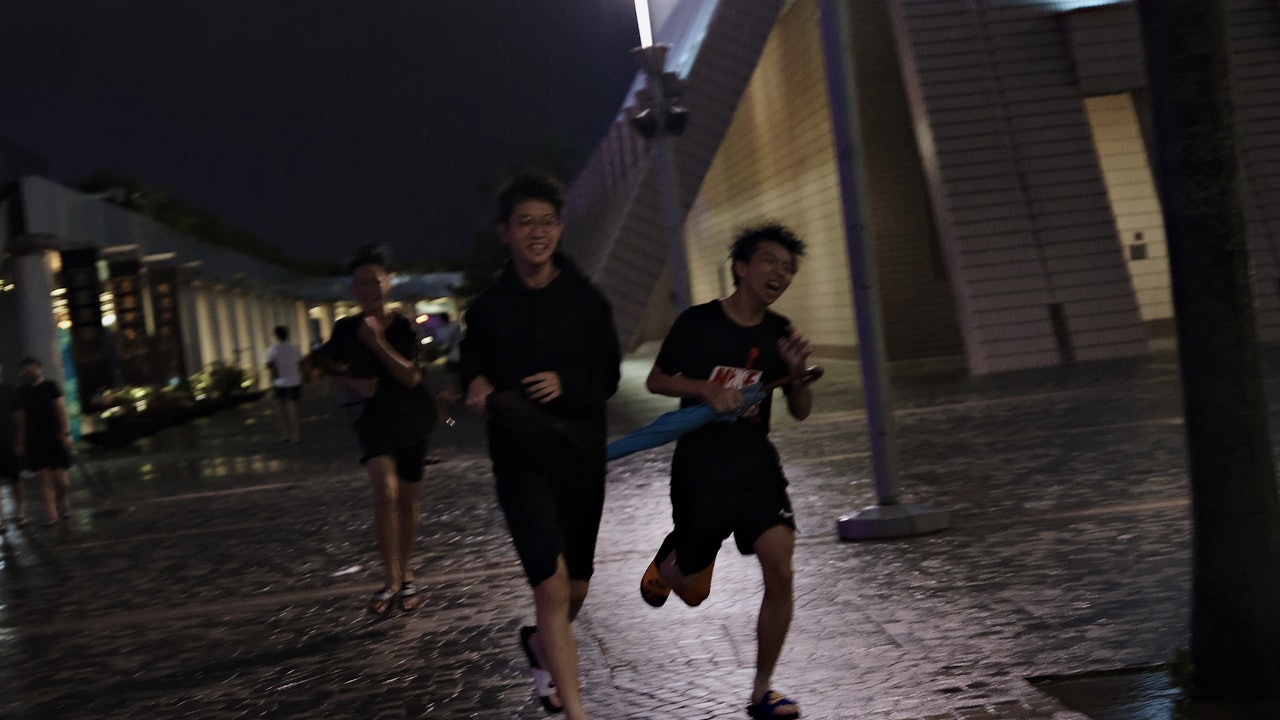The tropical cyclone "Lion Rock" brought squally heavy rain to Hong Kong. The Observatory hoisted Typhoon Signal No. 8 at 6:40 am today (9th). After that, it was announced several times that it was considering changing to Typhoon Signal No. 3, but it was repeatedly postponed. At midnight tonight, the Observatory once again predicts that Typhoon Signal No. 8 will be maintained for a period of time.
The Observatory’s "anti-mouth" has aroused heated discussions among netizens and made fun of the Observatory’s indecision.
The Observatory’s "Weather Essay" published an article titled "The Wind and Rain on the "Lion Rock" is on the same road", saying that the rainbands affecting the Pearl River Estuary moved faster this morning, so the wind is expected to weaken, but the periphery of "Lion Rock" is wide The storm belt did not change much throughout the afternoon. The situation was not as expected. The storm belt was wider and more continuous than expected.
The locations of gales, storms and hurricanes have been recorded in Hong Kong under Tropical Cyclone Warning Signal No. 8.
(Picture of the Observatory)
+11
The Observatory mentioned in the "Weather Essay" that the circulation of tropical storm "Lion Rock" is quite extensive. Under the combined influence of the tropical storm "Lion Rock" and the northeast monsoon, the wind will rise further after midnight last night (8th). It is expected that Hong Kong will gradually become common. Strong to strong winds, and occasional violent winds in the southwestern highlands.
As Hong Kong will be affected by the outer squally rain belt of the "Lion Rock" from time to time, it is expected to remain for some time today.
The Observatory issued a special report of Tropical Cyclone Warning Signal No. 8 at 4:40 in the morning, and the No. 8 Southeast Gale or Storm Signal at 6:40 in the morning.
During the period when Gale or Storm Signal No. 8 was in force, gales (63-87 km/h) were recorded at Chek Lap Kok, Tai Mei Tuk, Tap Mun, Waglan Island, and Tate’s Cairn Mountain, and storms (88-117) were recorded at Cheung Chau. Km/h), and Ngong Ping once recorded a hurricane (118 km/h or above).
Gale or storm related to "Lion Rock" has caused many tree collapse cases in Hong Kong.
A wide squally storm belt related to the tropical cyclone "Lion Mountain" (Japan Meteorological Agency Sunflower 8 satellite image at 3 pm on October 9).
(Picture of the Observatory)
According to the Observatory, the rainbands of tropical cyclones are usually accompanied by strong winds.
The rainbands affecting the Pearl River Estuary moved faster this morning. It is expected that the wind in Hong Kong will weaken slightly when the main rainbands move away.
However, since noon, the wide squally rain belt outside Lion Rock has affected the Pearl River Estuary, and the Observatory also needs to issue a yellow rainstorm warning signal.
The squally heavy rains did not change much throughout the afternoon. The squally rain belts affecting Hong Kong were wider and lasting than expected. Therefore, the local wind will weaken later than expected.
When the tropical cyclone Lion Rock passed about 500 kilometers southwest of Hong Kong when it was closest to Hong Kong, it became the furthest tropical cyclone from Hong Kong since 1961 that required the issuance of the No. 8 gale or storm signal.
+5
01News

